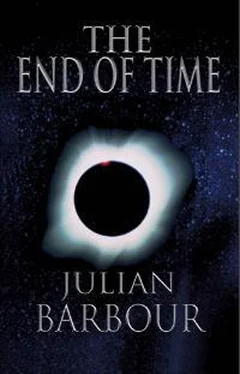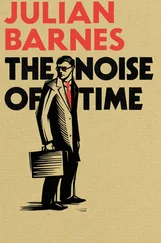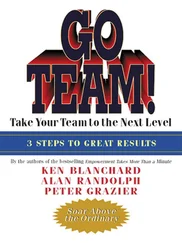You may wonder how I can preface a belief that time does not exist with a bit of personal history. How can history be if there is no time? That is the great question, and my answer comes at the end of the book. Most of the book is about what evidence physics can offer for and against the existence of time. However, in the first part I try to explain, in the simplest terms possible, the main issues, and to relate them to your direct experience of time. I want to try to make sure, if you have bought or borrowed this book, that you do not put it down in despair, unable to understand what I am driving at. I hope also that this introduction will encourage you to read on to the details. Many are fascinating in their own right. Because temporal concepts are so deeply lodged in our experience and language, I shall often write as if time existed in the way most people think it does. The same applies to motion. Please do not think I am being inconsistent – I should have to use many more words to express everything in a timeless fashion.
I have tried to make the text self-contained and accessible to any reader fascinated by time. If you find some parts harder then others, please do not worry if you have to give up on them. Several non-scientists who read a much more technical first draft found they could simply skim the harder parts and still pick up much of the message. For this reason, the more technical material that is not completely central to the story is generally put in boxes – take that as a sign not to worry if you have difficulty digesting it (though I hope you will at least try it). Also, various digressions, of potential interest to all readers, and genuinely technical material for cognoscenti are to be found in the notes at the end. I suggest you look at them after you have read each chapter. To help readers with little or no scientific background, the most important technical terms appear in the Index so that you can readily locate explanations of them in the text if necessary. Books for further reading are also recommended.
I dedicated my first book to my wife and our children. I dedicate The End of Time to my indomitable mother, just ninety-six and still hearing the larks clearly and singing as lustily in her church choir. I dedicate it equally to the memory of my father, who died three years after my wife and I moved into College Farm. My father, whom I missed very much, had a most useful saying that I should like to share with you: ‘Never believe anything anyone ever tells you without checking again and again.’ That has saved me from many a disaster. A very good friend of mine, Michael Purser, once remarked that if my mother was the irresistable force, my father was surely the immovable object. Whatever the truth, I should not be here but for them. Being here is the supreme gift.
J.B.
South Newington, March 1999
Note This printing of the book differs from the initial hardback in the correction of some minor errors and misprints, additions to the bibliography and books recommended for further reading, and slight rearrangement of the Notes to take into account new results obtained with Niall Ó Murchadha after the book had been written. This recent work should, if it stands up to critical examination, strengthen my arguments that time does not exist. See especially p. 358.
NOTES
(1) (p. 2) The article about Dirac appeared in the Süddeutsche Zeitung for Friday, 18 October 1963, and was based on an article by Dirac that appeared in Scientific American in May 1963.
(2) (p. 4) On hearing about my plans for this book, Michael Purser brought to my attention the following rebuke from Prince Hal to Falstaff:
Unless hours were cups of sack, and minutes capons, and clocks the tongues of bawds, and dials the signs of leaping-houses, and the blessed sun himself a fair hot wench in flame-colour’d taffeta, I see no reason why thou shouldst be so superfluous to inquire the nature of time.
Henry IV, Part I (1. ii)
(I comment on this in the Epilogue.)
Several people who have helped me greatly are mentioned in the text and notes, where it seemed more appropriate to express my gratitude to them. All of them also helped by reading some or all of an early draft and making comments. I am also grateful to several others (listed here in no particular order) who did the same: Dr Tiffany Stern, Michael Pawley, David Rizzo, Mark Smith, Dr Fotini Markopoulou, Gretchen Mills Kubasiak (with particularly detailed and helpful comments), Oliver Pooley, Dr Joy Christian, Cyril Aydon, Dr John Purser, Jason Semitecolos, Todd Heywood, John Wheeler (this is not J.A. Wheeler, though he did read the later draft, for which I am most grateful), Christopher Richards, Michael Ives, Elizabeth Davis and Ian Phelps. Joyce Aydon, Mark Smith and Tina Smith helped greatly with the preparation of the text. I should like to thank too Steve Farrar and his editor Tim Kelsey, who went to great trouble to report my ideas accurately in an article (entitled ‘Time’s assassin’!) in the Sunday Times in October 1998.
I am especially indebted to my friend Dierck Liebscher of the Astrophysikalisches Institut Potsdam, who prepared all the computer-generated diagrams (and also made helpful comments on the text).
Both my editors (Peter Tallack for the UK edition, Kirk Jensen for the North American edition) have done very well what editors of a book like this should do: be supportive but insist that it is for the popular market, not an academic text. It is not for me to judge how readable the final result is, but to the extent that it is, my readers must be grateful to them, as I am. I am also grateful to my copy-editor, John Woodruff, for numerous stylistic improvements and his thorough work. Lee Smolin, who appears often in the main text, needs to be mentioned especially here too, since he made the most valuable suggestion that I write the introductory chapters that comprise Part 1. Without these, the book in its first draft was much tougher.
My wife, Verena, and our children have been wonderfully supportive.
I also want to thank here my literary agent Katinka Matson and her partner John Brockman, founder of Brockman, Inc., not only for finding me quite the best publishers and editors I could hope for but also for a remark of John’s that encouraged me to write the kind of book this has become. According to John, ‘Roger Penrose has found the right way to write popular science today. He’s really writing for his colleagues, but he is letting the public look over his shoulder.’ For myself, I have certainly tried to write primarily for the general reader, but, in a reversal of John’s aphorism, I shall be more than happy if my colleagues look over my shoulder. This is a serious book, and it draws its inspiration from the way Penrose’s The Emperor’s New Mind engages with intensity – passion, even – both the interested public and working scientists. That is what gives his book its cutting edge and thereby makes it more absorbing for the non-specialist. Richard Dawkins’s The Selfish Gene is another example that comes to mind.
I have left to the end one other important person – you, the reader. As you will know from the Preface, I have tried throughout my life to fund my own research and would like to continue to do so. Every copy of this book that is bought (and borrowed from a library) helps me in this way. Thank you, and I do hope you get some pleasure from this book. I have enjoyed writing it. I hope to continue popularizing the study of time and will post details on my Website (www.julianbarbour.com) together with any significant developments of which I become aware in the study of time.
PART 1
The Big Picture in Simple Terms
Читать дальше












